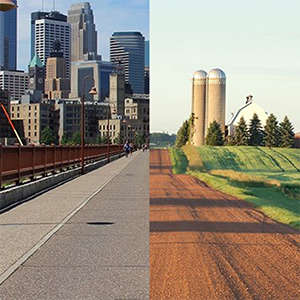Facts:
Wiebren Boonstra is a scholar of rural sociology and sustainability science. He works at the Department of Earth Sciences, Uppsala University. This essay is written for the SLU project “Governance, justice, and resistance – On the way to a fossil-free welfare society” that is funded through FORMAS. Wiebren would like to thank Sofie Joosse, Anke Fischer, Jacob Strandell, and Andrew Gallagher for reading an earlier version of this essay and suggesting useful changes.
More about the SLU project:
Governance, Justice and Resistance: On the way to a fossil-free welfare society
References
Boonstra, W.J., Björkvik, E., Haider, L.J., & Masterson, V. 2016. Human responses to social-ecological traps. Sustainability Science 11: 877-889.
Carolan, M. 2020. The rural problem: Justice in the countryside. Rural Sociology 85: 22-56.
Clapp, J. 2014. Financialization, distance and global food politics. Journal of Peasant Studies 41: 797–814.
Caves, S., Phelan, L., & Cameron, J. 2020. Space to tinker: From faux resilience to productive novelty in agricultural policy. Journal of Rural Studies 78: 87-95.
Cramer, K.J. 2016. The politics of resentment: Rural consciousness in Wisconsin and the rise of Scott Walker. Chicago: University of Chicago Press.
Durkheim, E. 2013 [1893] The division of labour in society. Second edition. Basingstoke: Palgrave Macmillan.
Glaeser, E. 2011. Triumph of the city. How urban spaces make us human. New York: Vintage.
Gomberg, P. 2007. How to make opportunity equal: Race and contributive justice. London: Blackwell Publishing.
Hallgren, L., Bergeå, H.L., & Nordström Källström, H. 2020. Conservation hero and climate villain binary identities of Swedish farmers. Routledge handbook of ecocultural identity.
Hochschild, A.R. 2016. Strangers in their own land: Anger and mourning on the American right. New York: New Press.
Kuehne, G. 2013. My decision to sell the family farm. Agriculture and Human Values 30: 203-213.
Mamonova, N., Franquesa, J., & Brooks, S. 2020. ‘Actually existing’right-wing populism in rural Europe: insights from eastern Germany, Spain, the United Kingdom and Ukraine. The Journal of Peasant Studies, ahead-of-print, 1-29.
Marx, K. 1976 [18885]. Capital. Volume 1. New York: Vintage.
Monnat, S.M., & Brown, D.L. 2017. More than a rural revolt: Landscapes of despair and the 2016 Presidential election. Journal of Rural Studies 55: 227-236.
Peirce. N.R., Johnson, C.W., and Peters, F.M. 2009. Century of the city. New York: The Rockefeller Foundation
Nature, 2010. Century of the city. Nature 467: 900–901.
Sandel, M. J. 2020. The tyranny of merit. What’s become of the common good. New York: Vintage.
Sayer, A. 2009. Contributive justice and meaningful work. Res Publica 15: 1-16.
Sayer, A. 2011. Habitus, work and contributive justice. Sociology 45: 7-21.
Thiede, B.C., Lichter, D.T., Slack, T. 2018. Working, but poor: The good life in rural America? Journal of Rural Studies 59: 183–193.
Thiede, B.C., Butler, J.L.W., Brown, D.L., Jensen, L. 2020. Income inequality across the rural-urban continuum in the United States, 1970-2016. Rural Sociology 0: 1–39.
Tönnies, F. 2001 [1887]. Community and civil society [Gemeinschaft und gesellschaft]. Cambridge: Cambridge University Press.
van der Ploeg, J.D. 2020a. From biomedical to politico-economic crisis: the food system in times of Covid-19. The Journal of Peasant Studies 47: 944-972.
van der Ploeg, J.D. 2020b Farmers’ upheaval, climate crisis and populism. The Journal of Peasant Studies 47: 589-605.
Williams, R. 1973. The city and the country. London: Chatto and Windus.
United Nations. 2014. World urbanization prospects. New York: United Nations.
Wuthnow, R. 2018. The left behind: Decline and rage in small-town America. Princeton: Princeton University Press.
